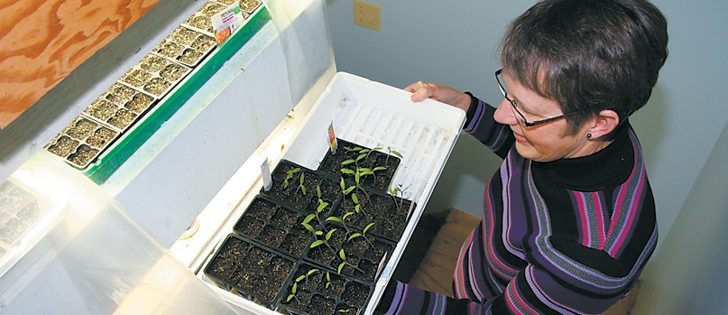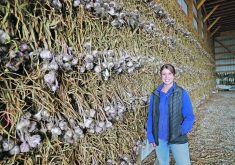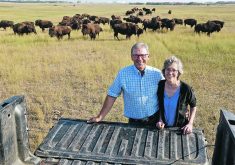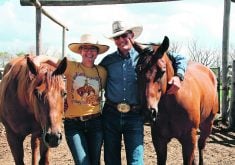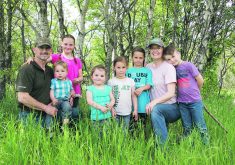HAWARDEN, Sask. — Jean and Ernie Pryor have worked in the far north and hiked the high Andes of Peru, but they call their Hawarden heritage farm home.
They grow canola, lentils and spring wheat on a 960 acre homestead property where George and Elizabeth Ledingham, Jean’s grandparents, raised 11 children.
Jean and Ernie made the switch to farming when their two children were school aged. It was a time of good prices, but they chose to continue with their respective careers in occupational therapy and SaskTel until 1997.
Read Also

Sustainable food has ‘lost all meaning’: prof
That marketing strategy is deader than a doornail, says a University of Guelph professor who specializes in consumer preferences and perceptions of agriculture and food.
The couple met when Ernie, who grew up on a farm at Bradwell, Sask., took a job working for Jean’s father, who owned a farm near Hanley, Sask. As a child, Jean split her time be-tween the family farm and Sask-atoon, where her father had a service station.
“I knew what the farm drawbacks might be and I also knew the positives as well,” Ernie said of their decision to start farming in 1983.
Jean said Ernie was handy and a good fit with farming.
“I knew Ernie could fix anything and that he would be an asset on the farm,” she said.
They initially commuted from Saskatoon, moving to the farm full
time in 1990 and continuing to work part time.
“We took a huge leap of faith and moved out here,” said Jean.
In 2010, the Pryor farm received a provincial century farm award for being continually farmed by the same family for 100 years.
Jean doesn’t answer immediately when asked about the importance of maintaining the family’s homestead farm.
Her answer comes later as she points to antique furniture, weathered family photographs and paintings and the trees that her grandparents planted.
Jean is fond of gardening, baking and quilting, while Ernie’s passions include restoring old cars.
They refurbished the 1910 farmhouse themselves, retaining original woodwork, pouring a new foundation, knocking out walls to create larger living spaces and replacing aging wiring, siding and plumbing.
“We were coming and we were staying,” said Jean of the massive renovation project they undertook.
They installed a wind turbine that pays for their power and also use a wood fireplace.
“We’re always looking for cheaper alternatives,” said Jean.
That includes choosing secondhand farm machinery, tackling home renovation themselves, raising Cornish cross chickens each spring and backpacking trips.
They initially farmed conventionally, with a 50-50 seeded crop-summerfallow rotation, but one windy spring and a damaged canola crop helped force the switch to continuous cropping.
“I’m happy with it. The inputs were a little higher, but the returns have been good,” said Ernie.
Last fall netted them one of their poorer crops, with lentils drowned out by too much water, sclerotinia in canola reducing yields and a double whammy of aster yellow and midge.
The couple shares farming chores, with occasional help from Ernie’s brother and Jean’s nephew.
The Pryors call each other their best friends and say they enjoy time spent together.
“When I blow my stack, he can be very patient,” said Jean.
Ernie said both stick to what they’re good at and are fussy about the work they do.
“He teases that’s how he got me, he’s picky,” Jean said.
This spring, the Pryors would like to seed early but wonder about the snow melt and where the water will go. In late March, the grid road past their farm lane had banks piled higher than a car, making it impassable.
“There’s going to be a lot of sloughs,” said Jean.
When not farming, both are active in the community and church, walk every morning, curl on natural ice, do old-time dancing and enjoy boating at a nearby lake. For the future, they will continue exploring the world and returning home.
“As long as we have good health, we will farm for quite a number of years yet,” said Ernie.

